Contents
Guide

The author and publisher have provided this e-book to you for your personal use only. You may not make this e-book publicly available in any way. Copyright infringement is against the law. If you believe the copy of this e-book you are reading infringes on the authors copyright, please notify the publisher at: us.macmillanusa.com/piracy. CONTENTS TO JEREMY AND DAVID M Y PRIMARY thanks go to my father, Herman Stock, and to my late mother, Doris Stock; to my children, Jeremy and David; and to my sister, Ellen Stern, for their playful participation in most of these activities. I also thank my nieces, nephews, and students for joining in the fun.
I am grateful to many generous friends, all of whom are extraordinary teachers: Lynn Balzer-Martin, Julia Berry, Jane Healy, Peg Hoenack, Mike Kligerman, Mary Marcoux, Greg Myhr, George Petrides, Karen Strimple, Liz Wilson, and my colleagues at St. Columbas Nursery School in Washington, D.C. In addition, I thank my husband, Alan, for his patience while I confined myself to the tight space in front of the word processor, as well as Lynn Sonberg and Meg Schneider of Skylight Press and Tina Y. Lee of St. Martins Press for their editorial assistance. D EAR P ARENT , You were a kid once.
Do you remember how it felt to wait in the dentists office for your name to be called? Do you remember long car trips over the river and through the woods to Grandmothers house, or, worse, long airplane rides? Do you remember rainy afternoons with nothing to do and being confined to bed with the chicken pox and having lots of energy to expend in a home that never had enough space? Kids havent changed. They will always want to burst out of tight spaces. They will always crave experiences like making mud pies, climbing apple trees, and riding bikes until dark. For our modern, urban, supervised children, however, such spontaneous activities are often out of the question. When something of value is taken away, something of equal value must take its place. The trick is to find substitutes for old-fashioned activities that will fit kids needs and fit into a tight space.
Helping Kids Get the Experiences They Crave (But Cant Have) What can you do to help kids get the experiences they crave? First, understand that kids are born with an inner drive to learn. They learn through active participation in the world around them. An example of active participation is playing Ring Around the Rosy. The child who is in the play learns more and has more fun than the passive child who merely watches from the sidelines. Active participation depends on childrens ability to use all their sensesnot only the familiar senses of vision and hearing, but also the senses that are less familiar because they are hidden inside our bodies. These hidden senses are: the tactile sense (through the skin), providing information about people and objects that we touch or that touch us; the vestibular sense (through the inner ear), telling us about our movement through space, our balance, and our resistance to the force of gravity; and the proprioceptive sense (through muscles and joints), informing us about our body position and what our bodies are doing.
Think of the child who plays Ring Around the Rosy. She is seeing, listening, holding other childrens hands, moving in a circle, keeping her balance, purposely falling down, and scrambling up again. Touching and being touched, moving and being moved, she is using many senses simultaneously and effectively. The efficient employment of all our senses is called sensory integration. Sensory integration is the unconscious process of taking in sensory messages, analyzing them in the central nervous system, and organizing them for use, in order to function smoothly in daily life. To function smoothlyto become competent human beingskids require a variety of active, multisensory experiences.
Second, unplug the TV and hide the videos. Television and videos provide passive entertainment and rob kids of the chance to learn through doing. Third, use this book. 101 Activities for Kids in Tight Spaces suggests activities that will satisfy kids need to touch, move, play, and think. Some ideas are old standbys. Others I devisedsometimes in desperation and always in cramped quarterswhile raising two exuberant boys, teaching hundreds of preschoolers, leading a den of Cub Scouts, organizing elementary school festivities, and running a birthday party business.
Helping Kids Choose an Activity Kids who can read will be able to leaf through this book and make their own selections. Younger children, or those who are not self-starters, may need your suggestions, and for them it is often a good idea to offer two or three ideas. You may be surprised by choices that children make. A childs interest in an activity may be affected by his or her internal personality traits, such as temperament, mood, learning style, perceptions, activity level, and attention span. In addition, external factors, such as materials, place, weather, time of day, and company of an adult or friend will affect a kids interest. It all depends.
Occasionally, your kid will choose an activity that just wont work at that particular momentlike Smash Hit Cookies when you are out of oatmeal. He may be unhappy or resentful, saying something like, I never get to do anything I want to do! Turn this potentially tense moment into a teachable moment. First, respond sympathetically: I know it seems unfair. Then, explain briefly why he cant do the desired activity: We have no oatmeal. Then, ask for suggestions to fix the problem: What should we do so this wont happen again? Finally, find out what his goal is. If he wants to make something good to eat, suggest Construction Snacks as an alternative.
If he just wants to pound his fists, then Oobleck may satisfy his need. When kids have calmed down and have regained self-control, usually they will be agreeable to trying something different. Helping Kids Get Unstuck Some kids, though, will avoid new activities and will stick to one or two favorites. Up to a point, repetitions are fine, because children learn something new each time they practice a familiar action. However, a child who insists on doing the same thing in the same way may need help to get unstuck. A possible solution to this situation is to show your own interest in a novel activity, and your child may cheerfully join in.
Once you get your kid started, back off and go about your own business. After all, the fun activities are meant to result in your childs very own work. Some attention, in the form of guidance, can spark a childs creativity: too much attention, in the form of control, can put a damper on it. Talking Positively about Kids Creations Indeed, providing just the right kind of attention can be challenging. The trick is to speak positively. Talking positively is not always easy, but it is always important, whether you are commenting about your kids art project or any other creative effort.
Here are some guidelines: Say, Tell me about your work. This simple comment invites the child to express herself verbally as well as artistically. The child may say, Its red, or I used up all the toothpicks, or Heres the whale, heres the fish, and heres the boat. Respond to what the child has said, with observations such as, Yes, I see that you used only red food coloring for your Paper Towel Tie-Dye, or You made a big pile of toothpicks! or I can see that the whale is spouting. If the child can think of nothing to say, you might encourage her with open-ended comments or questions that do not have a yes or no answer. For instance: I see that this corner of the paper towel has turned orange.


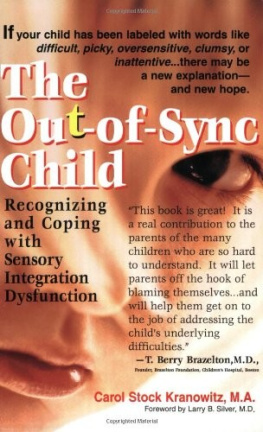
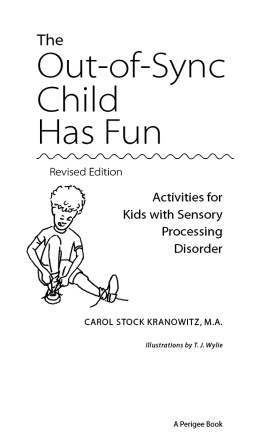
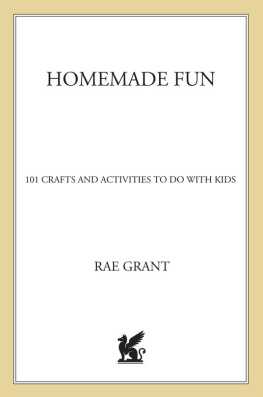
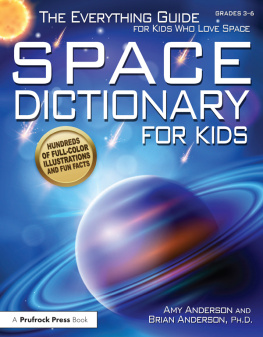
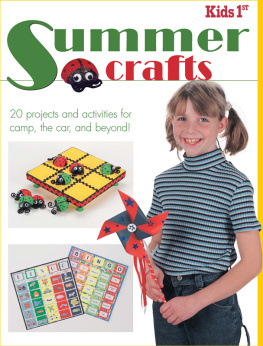
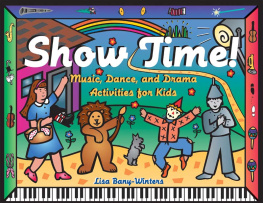


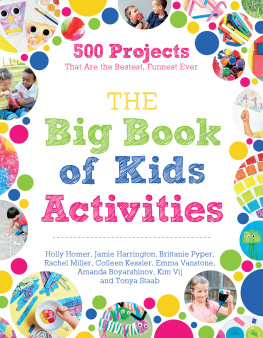
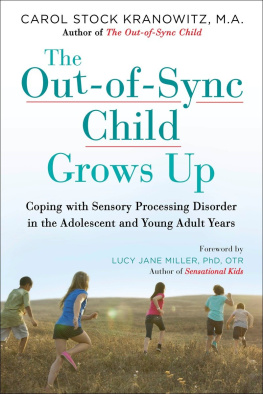

 The author and publisher have provided this e-book to you for your personal use only. You may not make this e-book publicly available in any way. Copyright infringement is against the law. If you believe the copy of this e-book you are reading infringes on the authors copyright, please notify the publisher at: us.macmillanusa.com/piracy. CONTENTS TO JEREMY AND DAVID M Y PRIMARY thanks go to my father, Herman Stock, and to my late mother, Doris Stock; to my children, Jeremy and David; and to my sister, Ellen Stern, for their playful participation in most of these activities. I also thank my nieces, nephews, and students for joining in the fun.
The author and publisher have provided this e-book to you for your personal use only. You may not make this e-book publicly available in any way. Copyright infringement is against the law. If you believe the copy of this e-book you are reading infringes on the authors copyright, please notify the publisher at: us.macmillanusa.com/piracy. CONTENTS TO JEREMY AND DAVID M Y PRIMARY thanks go to my father, Herman Stock, and to my late mother, Doris Stock; to my children, Jeremy and David; and to my sister, Ellen Stern, for their playful participation in most of these activities. I also thank my nieces, nephews, and students for joining in the fun.